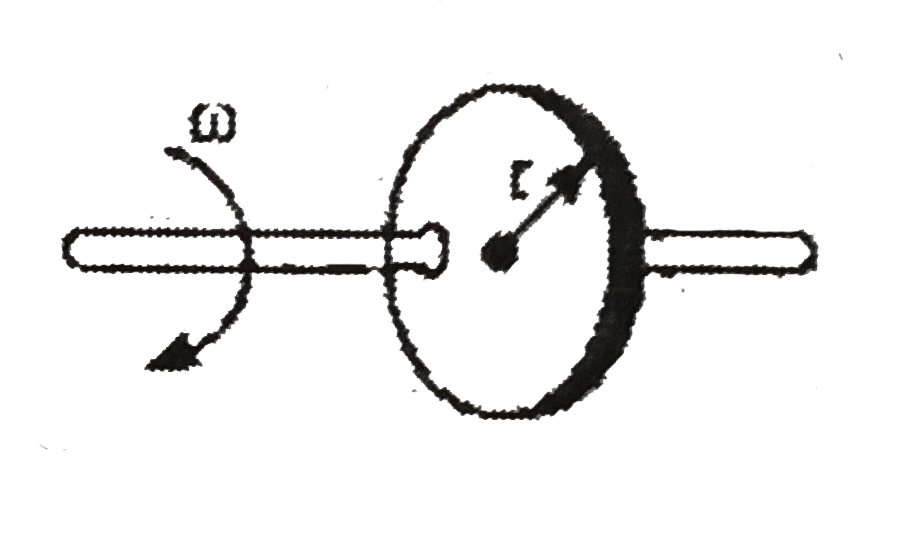A cube of side a and mass M is pivoted on a horizontal axis such that it can rotate about one of tis edges. Initially it is held in the highest position and then released. Find horizontal and vertical components of reaction of pivot on the cube at the moment when the reaction toward the centre of the cube becomes zero. Given that M.I of the cube about its edge is equal to 23Ma2.

Text Solution
Let P and Q be the components of reaction of pivot on the cube along and perpendicular to the OC.
M.I. of the cube about O is 23Ma2
α=τI=Mgsinθ.a√2/23Ma2=32√2gsinθa Now along OC, Mgcosθ−P=Ma√2ω2
Perpendicular to OC, Mgsinθ−Q=Ma√2α
Q=(Mgsinθ)/4
Intergrating α, we get ω2=3g(1−cosθ)a√2.......(1)
P=Mgcosθ−Ma3g(1−cosθ)2a=−32Mg+52Mgcosθ
When P=0 cosθ=3/5, sinθ=4/5
Now horizontal component of reaction is Psinθ−Qcosθ=(−3/25)Mg
Vertical component of reaction is Pcosθ+Qsinθ=(4/25)Mg

|
Topper's Solved these Questions
Similar Questions
Knowledge Check
A solid cube of side l is made to oscillate about a horizontal axis passing through one of its edges. Its time period will be
A2π√2√23lgB2π√23lgC2π√√32lgD2π√2√3lgThe moment of inertia of a cube of mass m and side a about one of its edges is equal to
A23ma2B43ma2C3ma2D83ma2A uniform disc of mass M and radius R is pivoted about a horizontal axis passing through its edge. It is released from rest with its centre of mass at the same height as the pivot.
 AThe angular velocity of disc when its centre of mass is directly below the pivot is √4g3rBThe force exerted by the pivot at this instant is 73mgCAngular momentum of disc is conservedDAngular acceleration of disc at the given instant is zero
AThe angular velocity of disc when its centre of mass is directly below the pivot is √4g3rBThe force exerted by the pivot at this instant is 73mgCAngular momentum of disc is conservedDAngular acceleration of disc at the given instant is zero
The moment of inertia of a cube of mass M and edge length a about an axis passing through one of its edge is
View SolutionThe moment of inertia of a cube of mass M and edge length a about an axis passing through one of its edge is
View SolutionThe angle between a diagonal of a cube and one of its edges is
View SolutionIf the edge of a cube is doubled,then the volume of the cube is ___ that of the initial cube.
View SolutionA cube of edge 5 cm is cut into cubes each of edge of 1 cm. The ratio of the total surface area of one of the small cubes to that of the large cube is equal to :
View Solution
